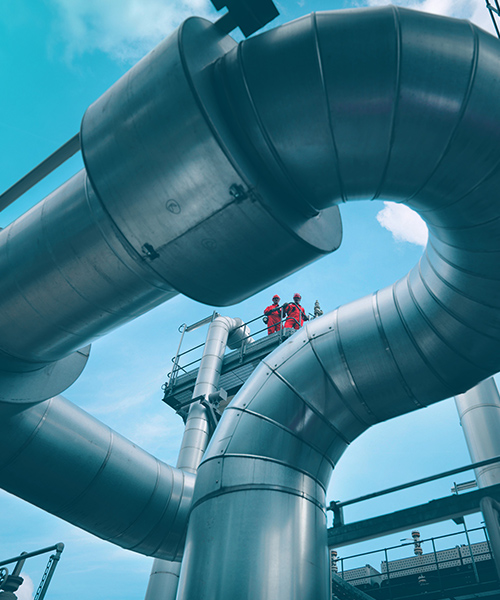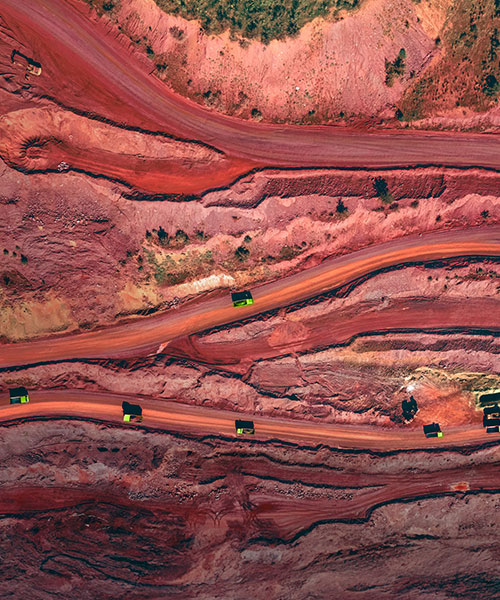Water availability can seem like a secondary consideration in decarbonization projects. But this precious resource can make or break a project.
Energy, chemicals and resources producers need to rethink their water management strategies to be resilient, economic, and socially acceptable in the face of climate change.
Water demand is evolving, as some long standing water intensive processes such as coal fired power generation are phased out. Meanwhile, emerging water intensive energy transition activities will grow in scale such as renewable hydrogen production, battery manufacturing, low carbon fuels, and mining for critical energy transition minerals.
The world’s sustainability goals depend on the viability of these facilities. But an unsatisfactory water supply – or a lack of social license for a project’s approach to sourcing water – can grind projects to a halt. What can producers do to guarantee their future water supply?
Defining the industrial water supply challenge
Most industrial processes require millions of liters of water each day. And this volume of fresh water needs to come from somewhere.
For example, producing 1kg of hydrogen requires 9.5 to 13 liters of ultra-pure water. This doesn’t include the cooling water needs, which can add another 60-90 liters of water per kilogram of hydrogen (GWI, 2023). A 50,000 ton-per-day copper mine will consume around 30,000 m3 of fresh water each day. That’s enough to fill an 80,000-seat stadium, like Brazil’s Maracanã, in about seven weeks. And a nuclear power plant can consume up to 2.75 m3 of water per megawatt hour of generation.
Even if there is enough fresh water to run these processes from a nearby source, this is just one aspect of the water supply challenge. Sourcing large volumes of water responsibly, a critical component of water stewardship, is essential for projects to attain funding via ESG-aware investors. And to meet stringent environmental regulations.
How can water intensive industries source and manage water resources?
The availability of fresh water from a nearby river or lake depends on the geography of the region. For projects in regions with abundant water supply, it’s possible to source fresh water directly for industrial uses.
However, proximity is just one factor to consider. Freshwater availability also depends on the technical viability of transporting water to a facility, the associated environmental impacts, and earning the social license to operate from communities and native landowners.
In drier regions, sourcing fresh water directly is more challenging. For example, miners in the copper-rich Atacama Desert in Chile have limited access to fresh water to run their processing facilities. In these situations, they need to explore other options to make up the water deficit to run their equipment.
The role of water desalination plants in water stressed regions
In places where fresh water is limited, water desalination can provide a stable, alternative source of usable water for industry.
Desalination is a technique to remove salt and other minerals from seawater, inland seas, brackish water from rivers or even wastewater. And while desalination plants are often built to provide drinkable water to populations in water stressed regions, a growing share of global desalination capacity is being devoted to refineries, mines, power plants, and oil and gas facilities.
Desalination infrastructure can be cost-competitive with other possible sources of water in dry regions. And it’s particularly viable if plant owners can demonstrate environmentally sensitive strategies to manage the brine by-product of the desalination process.
We’re currently doing this for a customer in the Middle East, to create a sustainable desalination project by turning the waste stream into a product line. We can then develop a circular economy from the brine waste, which minimizes environmental impacts by preventing brine from being discharged into the sea.
Reusing industrial wastewater to make projects viable
Facilities like refineries, power stations, smelters and chemical plants produce large volumes of wastewater. This water needs to be treated to remove the harmful chemicals, and then it’s usually returned to the environment.
However, owners of water intensive facilities can also explore techniques to reuse the wastewater from their processes, in an ongoing cycle. This is possible through desalination, or a series of other water treatment processes, depending on the nature of the wastewater.
While more costly than accessing fresh water directly, this circular approach to water management is advantageous in water stressed or remote regions. It can drastically reduce the water footprint of emerging industrial facilities, such as refineries for renewable fuels. Or it can even see new collaborations between facilities in water stressed regions, with one facility’s wastewater solving a nearby facility’s water access challenge.
Finding the right water management solution for industrial projects
Water access can’t be an afterthought when planning the next generation of energy, chemicals and resources projects. As water scarcity occurs in more places because of climate change, and competition for fresh water grows, water alone can prevent a project from proceeding.
Aspiring facility owners need to establish the right water solution as soon as possible because water sourcing can add years onto a project schedule. But by demonstrating water stewardship from the beginning, operators can access the water they need with minimal environmental and social impacts.



